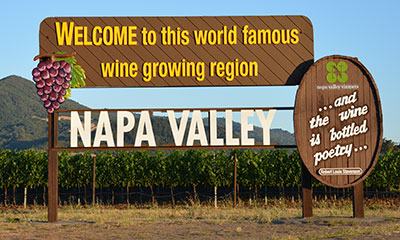High Priced Napa Wine and the Promise of Quality
 In a previous post I commented on the factors that go into determining if a wine is overpriced. I almost immediately got emails that painfully explained that no matter the fact that all these expensive Napa Valley wines sell out, they are in fact over priced.
In a previous post I commented on the factors that go into determining if a wine is overpriced. I almost immediately got emails that painfully explained that no matter the fact that all these expensive Napa Valley wines sell out, they are in fact over priced.
Clearly a great many very expensive Napa Valley wines are not overpriced despite the fact that they cost upwards of $100, $200, $300 or $500 per bottle. But it did raise the question, why is Napa Valley wine so expensive? There are three primary reasons for this.
The Promise of Quality
People pay more for something if they feel assured what they are getting is a quality level higher than average. This is what the “Napa Valley” name promises on a bottle of wine. Now, you may not agree that Napa Valley wine is better than Paso Robles wine or Monterey wine or Finger Lakes wine or Michigan wine. But you’d be in the minority.
Scarcity
This comes down to a supply and demand issue. Napa Valley wine production equals approximately 5% or so of the total wine production in California and it’s not likely to increase its share of production. Even with its outstanding reputation for quality, if Napa Valley produced 50% of California wine production the cost of its wines would be less.
Cabernet Sauvignon
Forty Percent of Napa Valley wine production is dedicated to America’s second favorite wine: Cabernet Sauvignon. For a whole lot of people, Cabernet is their favorite wine. So, when they are looking for the best of their favored wine, they think of Napa Valley. Simply, Napa winemakers chose the right varietal in which to specialize.
There are a good number of people who continually predict the demise of Napa Valley’s dominance and do so by pointing to the fact that so much good wine is now being produced not only across California, but across the country.
This increase in the geographic diversity of very fine wine is unquestionably happening. However, this may help continue Napa Valley’s price and awareness dominance. It often happens that when diversity creeps into a category and the choices increase, the mainstays of the category increase in their awareness quotient among consumers. Baseball is a good example.
Over the past 30 years 40 years Major League baseball has seen significant expansion. And yet, the old-time clubs like the Yankees, Cubs, and Red Sox are more popular than ever. The reason for this is that a good majority of baseball fans, as well as wine fans, look to a familiar choice in the midst of diversity. Napa Valley is a familiar choice.

There is no question that Napa is a wonderful place to grow Cabernet Sauvignon. Although today there are perhaps 500 Cab producers there, consumer confidence in the Napa brand began long before all but four of these were in place: BV, Louis Martini, Inglenook and Charles Krug. While Georges de Latour Private Reserve and Inglenook Cask were very good wines, nobody knew about them.
Most of Napa was planted to Carignane, Zinfandel and “White Zinfandel” (their name for Chenin Blanc). In all candor, suitability to Cabernet Sauvignon was not, IMO, the original driving force behind Napa’s fame. I think it originated from the 1956 Broadway musical “Most Happy Fella” when New Yorkers stolled around Times Square humming the title tune “The most happy fell in the whole Napa valley.” Given its richer history, if Sonoma had two syllables instead of three, things could have gone differently.
One defense of Napa’s pricing is that land here now goes for upwards of $250,000 per acre, a very real cost for the latecomers who comprise the vast majority of producers. This artifact of the market forces you enumerated is the main driver of price and is ten times what you pay for land in most other good Cab regions.
All that said, I charge $125 for my own WineSmith “Crucible” Cab Sauv, and consider it a bargain.
“One defense of Napa’s pricing is that land here now goes for upwards of $250,000 per acre, a very real cost for the latecomers who comprise the vast majority of producers. This artifact of the market forces you enumerated is the main driver of price and is ten times what you pay for land in most other good Cab regions.”
Clark, how are you?
The land in Napa would never bring that much money if it wasn’t true that you could charge so much more for the wine made from grapes grown on that land. In my view, the belief in the promise of quality is the primary driver of both bottle price and land.